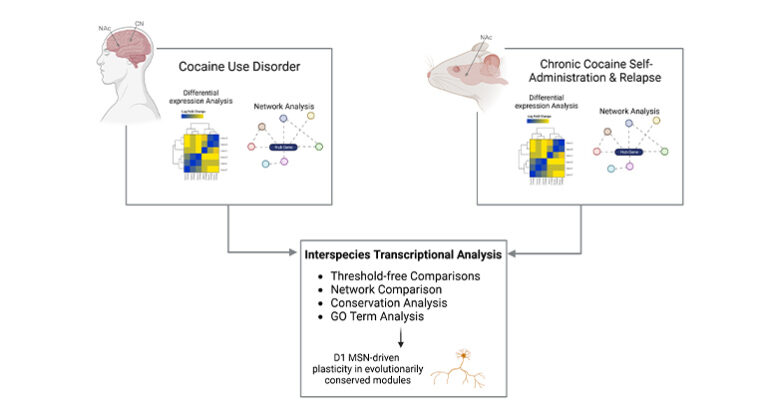Dogs are in labor when they show signs such as panting, pacing, refusal of food, and maybe vomiting. Additionally, they may exhibit restlessness, anxiety, changes in nesting behavior, and a drop in temperature.
It is important to pay attention to these signs to be prepared for the delivery of the puppies. When it comes to dogs giving birth, it is crucial for pet owners to be aware of the signs that indicate when a dog is in labor.
Recognizing these signs is essential to ensure the safety and well-being of both the mother and her puppies. From changes in behavior to physical symptoms, understanding the indicators of impending labor can help pet owners provide the necessary care and support during this crucial moment. We will explore the various signs and signals that dogs display when they are in labor, allowing you to be fully prepared for the arrival of new furry additions to your family. So, let’s delve into the world of dog labor and discover how to identify when dogs are ready to give birth.

Credit: www.facebook.com
Understanding Dog Labor
During dog labor, signs such as panting, restlessness, refusal of food, and pacing can indicate that the dog is about to give birth. Nesting behavior may also begin, and it’s important to provide a comfortable whelping box for the dog.
What Is Dog Labor?
Dog labor is the process through which a female dog gives birth to her puppies. It is a natural and instinctive process that occurs when the dog’s body is ready to deliver the puppies. Understanding dog labor is crucial for dog owners to provide appropriate care and support during this critical time.The Different Stages Of Dog Labor
Dog labor typically occurs in three stages, each with distinct characteristics.1. Stage One: This initial stage is known as the pre-labor stage. During this time, the dog may show signs of restlessness, anxiety, and panting. She may also exhibit nesting behavior, indicating her preparation for the birth. This stage can last for several hours or even a day.2. Stage Two: The active labor stage begins once the dog starts delivering the puppies. Contractions become noticeable, and each puppy is born individually. The duration between each puppy’s birth may vary, ranging from a few minutes to an hour. It is essential to monitor the mother dog’s progress and be prepared for any complications that may arise.3. Stage Three: The final stage of labor is the expulsion of the placenta or afterbirth. With each puppy’s birth, the mother dog will also expel the placenta. This typically happens within 5-15 minutes after each delivery. It is vital to ensure that all placentas are expelled, as the retention of a placenta can lead to complications.How Long Does Dog Labor Last?
The duration of dog labor can vary depending on various factors, such as the dog’s breed, litter size, and individual characteristics. On average, dog labor can last anywhere from 6 to 24 hours. However, it is essential to note that labor can extend beyond this timeframe, especially for larger litters. If the labor lasts longer than 24 hours, or if there are any signs of distress or complications, it is crucial to consult a veterinarian.During the labor process, it is essential to provide a calm and comfortable environment for the mother dog. Ensuring she has a dedicated whelping box and access to fresh water and food is vital. Regular monitoring of the mother’s temperature, behavior, and progress is also necessary to ensure a safe delivery.Understanding the different stages of dog labor allows dog owners to support their furry companions effectively. By providing the appropriate care and attention during this crucial time, you can help ensure a successful birthing experience for both the mother dog and her precious puppies.
Credit: www.bostonglobe.com
Signs Of Dog Labor
Some signs that dogs are in labor include a drop in temperature, restlessness, changes in nesting behavior, vomiting, loss of appetite, shivering, and panting. Additionally, panting, pacing, whimpering, and changing positions can indicate that there are more puppies on the way.
Drop In Temperature
Restlessness And Behavioral Changes
Nesting Behavior
Vomiting And Loss Of Appetite
Panting And Shivering
Monitoring And Assisting During Dog Labor
During dog labor, you can tell when a dog is about to give birth by observing signs such as a drop in temperature, restlessness, changes in nesting behavior, vomiting, loss of appetite, shivering, panting, and tiredness. Paying attention to these indicators will help you monitor and assist during the birthing process.
Checking Temperature
During dog labor, it is crucial to monitor your dog’s temperature to determine if she is close to giving birth. To check her temperature, you will need a digital rectal thermometer and a water-based lubricant. Gently insert the thermometer about an inch into your dog’s rectum and hold it in place for approximately one minute. A normal temperature for a dog is around 101 to 102.5 degrees Fahrenheit. However, right before labor, her temperature may drop to below 100 degrees Fahrenheit. This significant drop in temperature indicates that labor is imminent, and you should provide her with a comfortable whelping environment and be prepared for the arrival of the puppies.Timing Contractions
Another way to monitor your dog’s labor progress is by timing her contractions. Contractions are the rhythmic tightening and relaxation of the uterine muscles and play a crucial role in delivering the puppies. To time contractions, observe your dog closely and note the duration and frequency of each contraction. Use a stopwatch or timer to measure the time between each contraction. As labor progresses, you may notice that the contractions become more frequent and intense. If you observe strong contractions with little to no progress in delivering the puppies, it may be a sign of complications, and you should seek veterinary assistance.Providing A Comfortable Whelping Environment
Creating a comfortable and safe whelping environment for your dog is essential for a successful labor and delivery. Start by preparing a clean and spacious whelping box in a quiet and warm area of your home. Line the box with soft blankets or towels to provide comfort and absorb any fluids. Ensure the box has low sides to allow the mother easy access and exit. Additionally, provide fresh water and keep the room temperature slightly elevated to keep the puppies warm. By providing a cozy and stress-free environment, you can help your dog focus on the labor process and support her throughout the delivery.Knowing When To Seek Veterinary Assistance
While most dog labor and deliveries proceed without complications, it is crucial to know when to seek veterinary assistance. If your dog exhibits any of the following signs, it may indicate a need for professional help:- Excessive straining for over an hour without producing a puppy
- Weak or unproductive contractions for more than two hours
- Visible discomfort or distress
- Green discharge or foul-smelling discharge
- More than four hours between puppies
- Prolonged resting phase between delivering puppies

Credit: thevets.com
Frequently Asked Questions Of How Do You Know When Dogs Are In Labor
How Do Dogs Act When Labor Is Near?
As labor approaches, dogs may exhibit restlessness, anxiety, panting, pacing, refusal of food, and in some cases, vomiting. Nesting behavior may also begin, indicating the need to place the dog in the whelping box. Additionally, a drop in temperature and changes in nesting behavior can be signs of impending labor.
What Are The Signs Of A Dog Going Into Labor?
Signs of a dog going into labor include a drop in temperature, restlessness, changes in nesting behavior, vomiting, loss of appetite, shivering, panting, and tiredness. Other signs may include panting, pacing, whimpering, and frequent changes in position.
How Long Does The First Stage Of Dog Labor Last?
The first stage of dog labor typically lasts for an average of 6-12 hours. During this stage, the dog may exhibit restlessness, panting, pacing, and refusal of food. Nesting behavior may also begin. It is important to monitor these signs and provide a comfortable whelping box for the dog.
How Do I Know If My Dog Still Has Puppies Inside Her?
You can tell if your dog still has puppies inside her if she is panting, pacing, refusing food, and changing positions frequently. These signs indicate that she is not done giving birth. Additionally, vomiting and restlessness are common signs of a dog in labor.
Conclusion
Recognizing the signs of labor in dogs is crucial for their health and well-being. Remember to monitor changes in temperature, restlessness, nesting behavior, vomiting, and loss of appetite. Keep a close eye on your dog during this time and provide a comfortable whelping box.
Ensuring a safe and supportive environment will help your dog go through the labor process smoothly.



